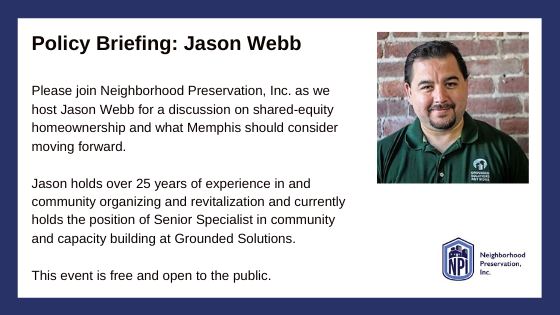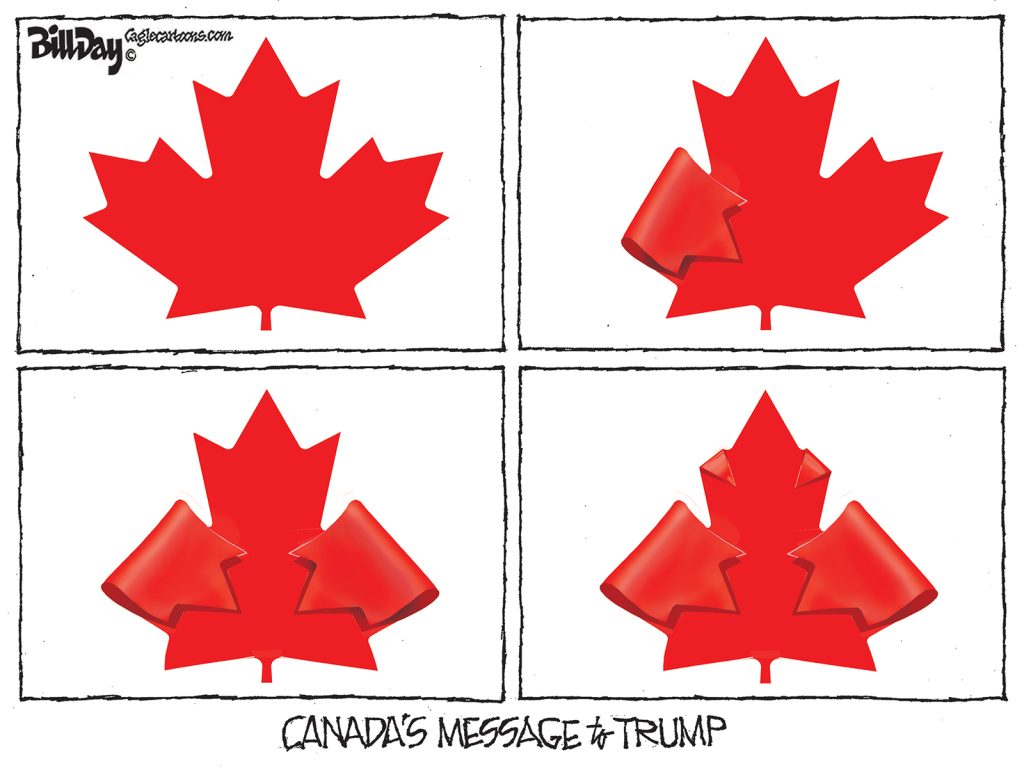After reading recent coverage by The Commercial Appeal about poverty in Memphis, we were left with the feeling that it touched on the surface issue but that complex forces were teeming below. As a result, we asked George Lord for his insights. We are deeply grateful to him for taking the time to respond to our request for more information about poverty. Dr. Lord is a sociologist with an academic specialty in inequality. He is a former Dean in School of Public and Environmental Affairs, and he now works in the nonprofit sector and as a consultant.
By George Lord
In recent weeks The Commercial Appeal published a series of articles addressing the nature of poverty in Memphis. The articles and the accompanying editorial present a variety of data to demonstrate their contention that poverty is ‘big business’ here in Memphis. Although some of the data come from credible sources, much of it comes from a “newspapers study” conducted by researchers at the University of Memphis that has not been made accessible to the public for scrutiny. However, there is a much larger issue at play here, that being the theories of poverty on which these articles are based. Examining these theories is critical because theories (of everything) shape our world views, the way that we view the issues, and the way that we approach public policy to solve social problems. It is the underlying theories and beliefs of the editors and reporters that guide them to ask (or not ask) particular questions in particular ways, thus informing (or perhaps even misinforming) their readers about the issue of poverty.
There are two common theories of poverty – one is individualistic and the other is structural. The individualistic theory assumes that poverty emanates from the characteristics of the individual; poor people are lazy or have some personal deficiency that causes their poverty that is then transmitted to subsequent generations through a “culture of poverty.” Within this individualistic framework, the solution to poverty is for individuals to pull themselves up by their bootstraps; increasing their education is the most oft cited remedy, combined with harder work and better choices. By making improvements within themselves, the poor could have avoided (and now can remedy) their problems; the failure to get out of poverty is the result of the individuals’ failure.
Public policy solutions informed by the individualistic theories usually focus on punishing those who make poor choices, although policies occasionally reward ‘good’ choices as well. These individualistic theories of poverty are embedded in both conservative and liberal political approaches to public policy. Conservatives usually embrace the model focused on individual characteristics while liberals are often proponents of the culture of poverty thesis.
The individualistic theories frequently include suggestions that the welfare system itself is part of the problem, creating dependency. Consistent with the culture of poverty theory, economists Gwartney and McCaleb argue “[welfare programs] have introduced a perverse incentive structure, one that penalizes self-improvement and protects individuals against the consequences of their own bad choices.” This argument has led some to advocate that public policy should only address the needs of those incapable of working. Or, at least only allow policy that incentivizes work.
The structural theory of poverty finds the causes of poverty in the social, economic, and political systems of society that contribute heavily to poverty. In the US, the labor market has a substantial percentage of jobs that do not pay enough to keep families out of poverty. Even when unemployment is low, there are many low-paying and part-time jobs that lack benefits.
Why does this occur? Because our laws favor business over workers – minimum wage laws, which have been notoriously controversial and difficult to pass, do not guarantee a living wage. Those taking a more structural view suggest that “poverty researchers have in effect focused on who loses out at the economic game, rather than addressing the fact that the game produces losers in the first place.”
If the problem is systemic, solutions are to be found in changing the system rather than the individual. This is much harder to do, and for this reason most policy attempts to change individual behavior (reflecting an individualist approach) rather than attempting systemic change (reflecting a structural approach).
Systemic change can take place several different ways. Social movements, such as the civil rights movement, can have an impact on changing the opportunity structure for those previously subjected to systemic discrimination. Community development can create systemic change by developing alternative institutions that focus on access, openness, innovation, and a willingness to help the poor gain well-being. Public policy is yet another venue to create systemic change by providing jobs, raising wages, expanding the safety net, assuring effective access to medical care, and coordinating social insurance programs (a living wage policy or a guaranteed job for those willing to work). All three avenues are often necessary to guarantee that real change occurs and real progress is made on social issues.
The Commercial Appeal and Mr. Peck seem to be driven by the individualistic theory and avoid any notion of the structural. The result is that their prescription is one that results from this explanation alone. They tend to advocate for behavioral change by the poor (starting with teenage girls), education programs (early childhood education), and incentivized public service. Although these approaches may be needed and may (or may not) be effective, they only address one aspect of the problem.
In the middle of the last century a Swedish Nobel laureate, economist, sociologist, and politician, Gunnar Myrdal, laid the foundation for a different way to view the issue of poverty. This theory also creates a framework for a more comprehensive set of public policies to address the problems of poverty. Examining poverty from national level, Myrdal identified what he called an “interlocking, circular, interdependence within a process of cumulative causation.” If that doesn’t cause you to close your browser now, nothing will. He used this theory to explain development and underdevelopment of nations, but it is also useful when considering poverty here in Memphis.
Myrdal showed that there is a relationship between community well-being and individual well-being; when there is a decline in the structural aspects of a community, the individuals in the community also experience declines in a variety of ways. This has been the case for Memphis, as well as in many other cities around the world. When an economic crisis befalls a community, such as a factory closing, individuals and families are impacted in a variety of ways; if other jobs with similar wages are not available, individuals much choose between taking a job for lower pay or relocating to another area that may have more opportunity.
As more businesses close as a result of the factory closing (their former clientele now facing harsher economic circumstances or having moved away), the decline continues. The interdependence of these factors accelerates, resulting in a cycle of decline. At the community level, a lack of employment opportunities leads to outmigration, closing retail stores, and declining local tax revenues, which leads to deterioration of the schools, leading to poorly trained workers, leading firms not to be able to utilize cutting edge technology and to the inability to recruit new firms to the area, which all creates an even greater lack of employment.
This cycle repeats itself at the individual level. The lack of employment leads to lack of consumption and spending due to inadequate incomes, and to inadequate savings; individuals do not have resources to invest in education and training and they lack the ability to invest in businesses or to start their own businesses. This situation leads to lack of expansion, erosion of markets, and disinvestment, all of which contribute to more inadequate community opportunities. Health problems and the inability to afford preventive medicine, a good diet, and a healthy living environments become reasons the individuals fall further behind. This spiral of poverty also means that people who lack adequate income fail to invest in their children’s education, the children do not learn as well in poor quality schools and they fall further behind when they go to get jobs. They also are vulnerable to illness and poor medical care.
Another effect of the cycle of poverty is that individual lack of jobs and income leads to deteriorating self-confidence, weak motivation, and depression. The psychological problems of individuals are reinforced by association with other individuals in similar circumstances, leading to a culture of despair and misery. This culture of despair affects leaders as well, generating a sense of hopelessness and fatalism among community leaders. Yes, even newspaper editors.
Since the problem of poverty is clearly complex and multi-causal, solutions will have to be the same. The key is that we cannot only focus on addressing the deficiencies of the individual poor, rather we must also tackle the need for social capital throughout the community. Creating new organizations will not fix the problem; rather, existing organizations with roots in the community are more likely to understand and build on the assets within the community rather than focusing on the community deficits. Effective strategies will draw from both individualistic and structural theories to create a comprehensive approach to build the self sufficiency of the community.
Fortunately, there are communities around the country that have created effective strategies to address poverty. The efforts in the communities that have had a positive impact on poverty share three characteristics that are critical to the success of the anti-poverty programs:
* They are comprehensive.
* They are collaborative.
* They involve intensive community organizing.
Comprehensive solutions for Memphis should start with the development of a thorough asset map of the community that describes the strengths we have as well as the negative aspects of the city. The next step is to develop programs that bridge the individuals needs as well as the community’s needs, either within existing agencies and institutions or in new and innovative organizations.
Collaboration will be key to the success of these efforts. Both formal and informal collaboration with organizations and individuals sharing resources and information are a necessary part of a solution. The silos of Memphis that have occurred in public, private, and not for profit organizations must be addressed and no longer tolerated by those looking for solutions.
Community organizing must be a critical component of all efforts to address poverty in this city. However, it must be recognized that community organizing is a tool that must reach out to be inclusive and avoid exclusive approaches. The individual and community well-being are intertwined. Individuals participating as a community created the spiral down and only they can counter the spiral. Empowerment of the poor is central to this effort; only through a consistent focus on the interplay between individuals and the community can real solutions be found.
Depending on which theoretical explanation one accepts, differing approaches to resolving the problem will be pursued. The explanation and solutions offered by the Commercial Appeal are consistent with the individualistic explanation of the problem and will leave many of the pervasive issues of poverty unaddressed. A more comprehensive approach, a community development approach that is collaborative and comprehensive, is needed to begin searching for adequate solutions to this pervasive problem.





Dr. Lord’s post is very interesting. He says “… there are communities around the country that have created effective strategies to address poverty….”Could you please ask Dr. Lord to name those communities? Also, could you ask if he would name some leading articles or books that document those successes? Thanks!
Eddie,
Thank you for the question. While not an exhaustive list, but some strategies which have worked:
• Improve local industry competitiveness through cluster development or building creative communities.
• Enterprise zones, redevelopment and other tax based incentive programs for economic development and channeling private investments.
• Inclusionary zoning, affordable housing and similar programs that place conditions on development.
• Downtown revitalization and civic improvements that increase amenities and make areas more attractive, hoping to stimulate employment and tax revenues.
• Infrastructure investment, including parks, water, waste disposal, schools and other public facilities.
• Community organizing.
• National and regional reinvestment that shifts funds from one area to another, such as the commitment to helping the Southern US growth after WW II.
Change can occur through the policy process. The range of federal and social policies that can be adjusted to accomplish poverty reduction include providing jobs, raising wages, expanding the safety net, assuring effective access to medical care, and coordinating social insurance programs. One thing is certain, when local government does not support a fair wage and anti wage theft legislation, the community is on the wrong track.
In order to protect these programs in an era of governmental retrenchment, it is increasingly clear that the poor and their advocates need to be more politically mobilized. Legal changes to enforce civil rights of the poor and to protect minority groups are needed. For example, the American Disability Act has established many gains for otherwise able persons who happen to be blind, deaf, or with limited mobility. One of the boldest policy moves is suggested by Quigley (2003) and others who advocate a constitutional amendment to guarantee a job to anyone who wants one and to guarantee that anyone working full time would be able to earn a living wage.
Regarding the structural approach, it is interesting that this is the approach to poverty that is the least commonly described in the poverty literature, but community based examples are what is brought out whenever successes are discussed. There are no comprehensive community based self-sufficiency programs from the federal government or most states. The bulk of efforts remain experimental and rooted in programs from foundations. In our review of what works to build community and improve the lives of poor people we recall examples like Dudley Street (Medoth and Sklar, 1994), not a welfare office. The key to these successes is empowered participation.
Communities with strong social capital (or similarly entrepreneurial communities described by Flora and Flora) have been shown to be more resilient to adversity and thus protect their residents from the spiral into poverty that less civic communities experience when facing similar challenges.
Community economic and political systems and institutions reflect community values and respond to the social capital that underlies these values. While reforming social institutions is a policy response to poverty essential in poverty communities, Duncan (1999) concludes her book on rural poverty with the observation that communities which value equality and have narrow gaps of opportunity also have institutions that reflect these values and to a greater degree try to not leave anyone behind too far. She thinks that education is the most important local institution where this dynamic can be reversed in poor communities. Goldsmith and Blakely in their book Separate Societies (1992) make the same type of argument. Policies that build community institutions help to close the gap between poverty and rich communities,
rather than many existing policies that widen it.
Increasing the effectiveness of anti-poverty programs requires that those designing and
implementing those programs need to not only develop adequate theories of poverty to guide programs, but they must make sure that the community development approaches are as comprehensive as possible.
For further reading on the topic, I would suggest:
Blakely, E. J., & Bradshaw, T. K. (2002). Planning Local Economic Development. Thousand Oaks: Sage.
Duncan, C. M. (1999). Worlds Apart: Why Poverty Persists in Rural America. New Haven: Yale University Press.
Florida, R. (2002). The Rise of the Creative Class. New York: Basic books.
Fung, A. (2004). Empowered Participation: Reinventing Urban Democracy. Princeton: Princeton University Press.
Goldsmith, W. W., & Blakely, E. J. (1992). Separate Societies: Poverty and Inequality in American Cities. Philadelphia: Temple University Press.
Medoff, Peter and Holly Sklar. 1994. Streets of Hope : The Fall and Rise of an Urban Neighborhood. Cambridge: South End Press
Quigley, W. P. (2003). Ending Poverty As We Know It. Philadelphia: Temple University Press.
Rank, M. R. (2004). One Nation, Underprivileged. New York: Oxford University Press.
George